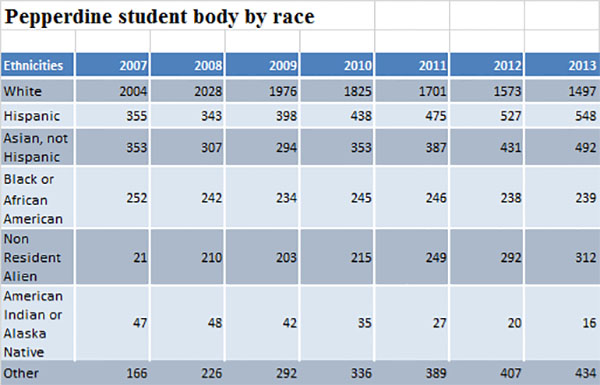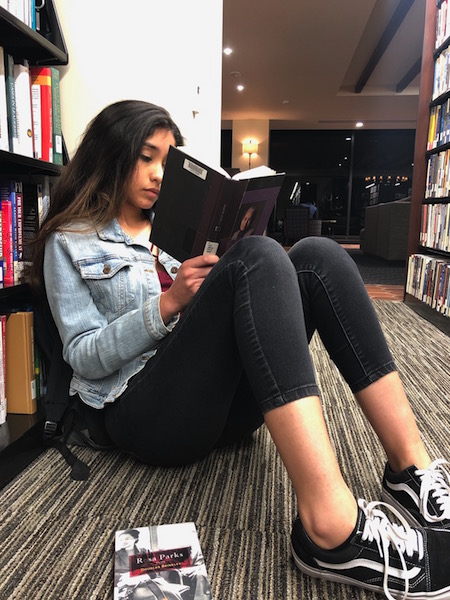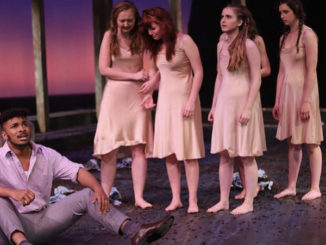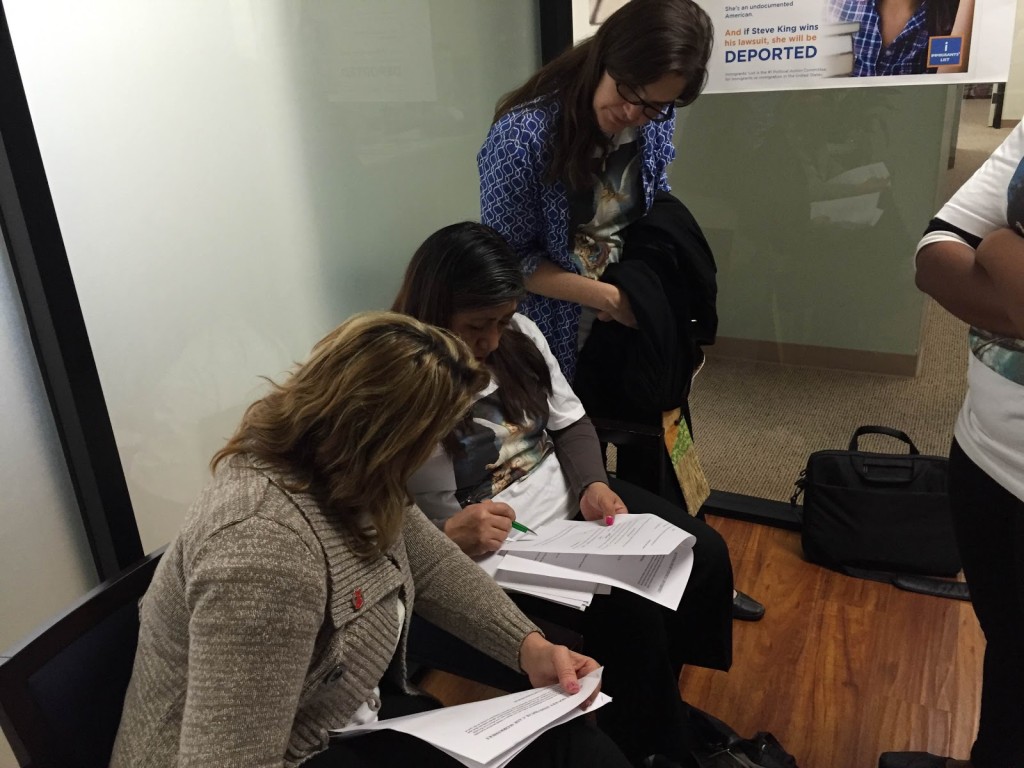
To some students Pepperdine is a slice of heaven, full of smiles, BMWs, Christians and great opportunities.
However, for others, the breathtaking view isn’t enough to mask the apparent lack of ethnic representation on campus.
About 48 percent of people in Los Angeles County identify as Hispanic or Latino, according to a 2013 report by the U.S. Census Bureau.
Only 15 percent of undergraduate students at Pepperdine identified as Hispanic or Latino, according to a 2013 fact sheet from the university’s Office of Institutional Effectiveness.
Despite recent growth in the Latino population, Pepperdine still lags way behind the county’s demographics. Further, the Latino students on campus have struggled to create a strong sense of community and the Latino Student Association has not actively promoted its activities, which aim to improve cultural awareness and appreciation. The result is Latino students say they feel invisible despite being the largest minority group on campus.
“Compared to the rest of California, I feel like Pepperdine doesn’t have a large Latino student body,” junior interpersonal communication major Lindsay Kawano said. “Living so close to Los Angeles, I would expect a larger amount of Latino students at the university.”
In recent years, Pepperdine’s Latino population has grown tremendously.
There were 372 Latino students out of 3,205 undergrads in 2010, university data showed. The 2013 numbers indicate there are now 548 Latino students out of the 3,528 undergraduate students enrolled.
Only 3 percent of the Seaver College faculty identified in 2010 as Hispanic or Latino, according to university data. In 2013, 4 percent of the faculty identified as Hispanic or Latino.
“I went to Pepperdine in the 1970s,” Dan Rodriguez, professor of religion and Hispanic studies at Pepperdine, said. “The Latino population then was maybe 40 students out of 1,700. Fast forward almost 40 years and the Latino population is now at 15 percent.”
A total of 1,497 undergraduate students identified themselves as white only, or 42 percent of the student body. About 27 percent of Los Angeles County residents are white only, and not of any Hispanic origin, according to Census data.
The population of black and Asian students at Pepperdine better reflect the county’s demographics than the Latino population does.
In Los Angeles County, about 9 percent of residents are black, while at Pepperdine almost 7 percent of students are black, according to Census and university data.
Asian residents make up about 14 percent of the population in Los Angeles County, while at Pepperdine 13 percent of students are Asian students, according to Census and university data.
“I find it strange that most students at Pepperdine are white even though the university is located in Los Angeles County, where most people are Hispanic or Latino,” junior Hispanic studies major Saul Lopez said.
Students were more concerned that there wasn’t a stronger sense of community among the Latino population.
“I do not feel like there is a strong Latino community,” senior international business major Carla Romero said. “I know that there is a Latino Student Association, but it is hardly advertised and doesn’t have a lot of participation like other cultural groups on campus.”
Rodriguez served as the faculty sponsor for the Latino Student Association (LSA) for a number of years.
“LSA has not been as active in the last couple years,” Rodriguez said. “I wish that LSA was more active.”
One successful student-led organization that promotes cultural awareness and diversity on campus is the Black Student Association or BSA.
“I find a lot of value in the presence and support of intercultural associations and clubs for two main reasons,” BSA Vice President Ashley Thurmond said. “They provide a space for people of a common culture to cultivate community, and through the work of these associations we develop Pepperdine’s community as cultural understanding is furthered through cultural education efforts.”
Latino students said they found it difficult to gather together and cultivate community because of lack of participation.
“Only (7) percent of the student body is African American and the BSA is successful,” junior public relations major Kaelyn Lark said. “Why can’t the (15) percent of students that are Latino create an organization that is just as successful and well publicized?”
No member of the LSA returned repeated phone calls or emails to comment on this story. This is evidence to the issues behind the LSA’s lack of communication and outreach.
“LSA’s efforts have been acknowledged recently,” Thurmond said. “I do believe that there is always room to further promote the Latino community’s representation on campus.”
Some students did not even notice that Latinos are the most represented out of all the minority groups on campus.
“The numbers are shocking once you see them,” Lopez said. “Walking around campus everyday I never would have guessed that there are more Latino students than Asian or black students.”
Other ethnic groups’ visibility is greater because they put on bigger events and there’s a sense that they are present, Rodriguez said.
“It’s not that the Latino population is not there,” Rodriguez said. “It’s that they’re more invisible.”
The Latino population has not received the notoriety or attention that other ethnic groups experience on campus.
“Representation of different cultures and ethnic groups is an important aspect to promoting diversity at Pepperdine,” Kawano said. “No one wants to feel like they’re culture isn’t appreciated.”
Even when it comes to Pepperdine’s international programs, some students noticed a lack of Latino culture represented.
Although Pepperdine has six year-long international study abroad programs, four of them are in Europe and only one is in a Latino culture: Argentina.There is a summer program to Madrid.
“Pepperdine should add another study abroad program in either Mexico or Spain,” Lark said. “That way more Latino cultures can be explored.”
Despite some students who think there is a lack of Latino representation, there are some people who think Pepperdine does represent the culture.
“I think Pepperdine does a good job of representing the Latino community,” Spanish Professor Cristina Chimeno De Roggero said. “There is a lot of service learning projects like LEAP and Project Serve where students reach out to the Latino community. Many students become more aware of the culture after experiencing these programs.”
Many students participated in these programs over the years and have gained a cultural understanding through experience, Roggero said.
“As a professor, I don’t just teach the language,” Roggero said. “I want students to learn the culture as well. It is our responsibility as teachers to help people understand the culture.”
Students suggested ways to make the community at Pepperdine more aware of Latino culture.
“LSA can become more active and create a Club Convo about the Latino community,” Kawano said. “Pepperdine can educate students on the Los Angeles Latino culture and what can be done to help improve communities.”
The Student Programming Board at Pepperdine is one of the main organizations created to unite the campus through community building events, Special Events Chair Jonathan King said.
“I don’t believe the Latino community is fairly represented at Pepperdine,” King said. “For whatever reason, other cultural groups are better represented on campus. Our main goal as the board is to make sure that awareness of all cultures is spread through various arts and events.”
The Student Programming Board was created to keep up with the changing times and the growing amount of diversity amongst students, King said.
“In due time, I think the Latino community will be better represented on campus,” King said. “Pepperdine will become more and more diverse with more people coming in and out. Over time there is a growing desire to learn about more cultures and to be more culturally competent. The ultimate goal is that everyone feels their culture is important, represented and celebrated.”
Austin Cox completed this story in Dr. Christina Littlefield’s spring 2014 Jour 241 class.



